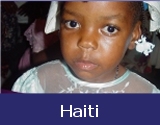 |
Contact usUnited Caribbean TrustUCT Guyana visitGuyana schoolsWomen's NGOsCitizens Initiative
Adopt a family |
home >> caribbean
>> guyana>>
 GUYANA - Pride News Magazine - Guyana Facing Flooding Peril Says Canadian M.P. Wednesday 9th March 2005. TORONTO, Ontario: Canadian M.P. Jim Karygiannis is warning that Guyana -- still reeling from the flooding caused by five days of continuous, unremitting rain in mid-January -- faces an even greater potential danger from massive flooding in the official rainy season of May and June. “There is a very real possibility that flooding could take place on a truly monumental scale,” Karygiannis, just back from a fact-finding visit to Guyana, told Pride News Magazine. “The dams which control the East Demerara Water Conservancy (EDWC), could break and thousands could die and be made homeless in Georgetown. “This is not mindless scare-mongering, this is a fact. Worse, I was reliably informed that if the [Northern] dam was to burst, the force of the water could well breach the seawall.” Karygiannis, the Federal Member of Parliament for Scarborough-Agincourt, met with Canadian Prime Minister Paul Martin just before leaving for Guyana, and had another meeting with him within hours of returning to Canada. “The Prime Minister was anxious to learn of Guyana’s needs in the wake of the January flooding,” Karygiannis said. “He told me that I should see him soon after I came back to Canada. The news I had to give him was far more serious than we could possibly have known.” Karygiannis met Guyana’s President Bharrat Jagdeo in Georgetown, but it was Ravi Narine, Chief Executive Officer of the National Drainage and Irrigation Board, and Head of the Task Force on Infrastructure Recovery, who alerted him to the potential for disaster posed by the condition of the EDWC’s Northern dam. He says that Narine told him: “If it breaks, we will lose the coast. Most of the populated area of Guyana would be flooded and the seawall could collapse. This would cause the coastline of Guyana to recede up to 20 miles inland, requiring the immediate evacuation of up to 40 per cent of the population.” Georgetown and the coastal strip are below sea level, and protected by the seawall and a complex network of pumps and dykes. The EDWC area lies to the south-east of the capital city. Karygiannis flew over the site, which was built 150 years ago by Dutch engineers, and is designed to handle one inch of rain per day. The old cokers -- dam gates -- used to control the volume of water are in a dilapidated state. “Time and the recent severe flooding have left the walls of the Conservancy dams in a weakened state, and vulnerable to the ravages of the upcoming rainy season,” Karygiannis said. “If they break, there is a very real possibility that thousands would perish.” Karygiannis has told Prime Minister Martin that a “major” effort must be made to strengthen the weakened dam gates at the EDWC, a job which is expected to call for the immediate expenditure of US$3.5 million, for what is, in fact, a short-term solution. He says that Britain is giving 500,000 Pounds Sterling -- the equivalent of US$900,000. The United States has committed US$1.2 million, and Karygiannis believes that Canada should immediately provide US$1.4 million towards the repairs. Pride has obtained a copy of a confidential report prepared for the Government of Guyana by Dutch engineers Olaf van Duin and Nisa Nurmahomed, who were sent in from neighbouring Suriname. They refer to the EDWC area as “a fragile construction,” and note: “At the eastern section of the Northern dam, about 30 per cent of the dam is in critical condition. For the rest of the Northern dam and the Western dam about 10 per cent is in a poor state.” They also suggest that unless repairs are made very quickly there could be “overtopping” which “will result in numerous breaches and the release of in the order of 100 billion gallons of water into the coastal zone.” In his report to the Prime Minister, Karygiannis is looking both short-term and long-term and says he believes the funding should come through the Canadian International Development Agency -- CIDA -- and that the Canadian Government should also provide Guyana with the relevant technical assistance and “investigate ways to contribute to the on-going repairs on the EDWC dam..” The Karygiannis report warns that in the event of a flooding disaster “the national government would not be able to function, as there would be major disruptions in communications, government offices would be under water, and government members themselves would have to be evacuated.” It goes on: “The only way to evacuate people would be by boat,” and adds that “the feeling was that the airport would remain above water, but the road to the airport would be quickly flooded and not be passable.” “Should the international community be able to respond quickly enough to be able to evacuate people, with Georgetown under water, there is no community large enough for the refugees,” the report says. “Agriculture, which is conducted on the coastal plain, would be wiped out -- fields would be flooded and livestock would drown. “If this should happen, there is a very real possibility that thousands would perish -- from the flood itself and from disease. Guyana as we know it today would cease to exist.” Karygiannis will also be making a full report to Minister of Foreign Affairs Pierre Pettigrew and to Minister of International Cooperation Aileen Carrol -- who is responsible for CIDA. The Parliamentary Secretary to the Minister of Transport, Karygiannis said that he felt GuyanaÂ’s initial flooding plight had been somewhat pushed into the background because of the concurrent huge international response to the tsunami catastrophe in South-East Asia. He has a number of Sri Lankans among his constituents, and made a special visit to the tsunami-ravaged coast of the country in order to assess needs, and Canada’s medium- and long-term responses. As he also has a substantial Guyanese population in his riding, he decided that he should visit Guyana in the wake of the January flooding. He expected to merely gather on-the-spot information about Guyana’s return to normalcy, and to assess the medium- and long-term rebuilding needs. “I was totally unprepared for the crisis-in-the-making which I found,” he told Pride. While in Guyana he also met with Minister of Agriculture Satyadeow Sawh, Minister of Health Dr. Leslie Ramsammy and Minister of the Public Service Dr. Jennifer Westford. Canada’s financial commitment to the initial flooding crisis totaled C$385,000, equivalent to G$57.9 million. An initial C$100,000 -- G$15.2 million -- was sent to UNICEF, in response to the United Nations Appeal. This was followed by a further C$100,000 -- G$15.2 million -- to the International Red Cross, the money coming from CIDA’s International Humanitarian Assistance Fund. The Canadian Fund for Local Initiatives (CFLI) was increased by C$170,000 -- G$26 million - to give the Canadian High Commission in Georgetown the ability to respond quickly, and without undue red tape, to urgent needs, and computers worth C$15,000-worth -- G$1.5 million -- were provided for the Joint Operations Centre and the Civil Defence Commission. Among the Dutch engineers’ recommendations for the
coming rainy season is the creation of Disaster Management Plans, and
they warn that the long-term aim of making the EDWC totally safe “will
cost in the order of tens of millions of U.S. dollars at the least |

 


|
| Copyright © 2022 www.UnitedCaribbean.com. All rights reserved. Disclaimer Click to Contact us |